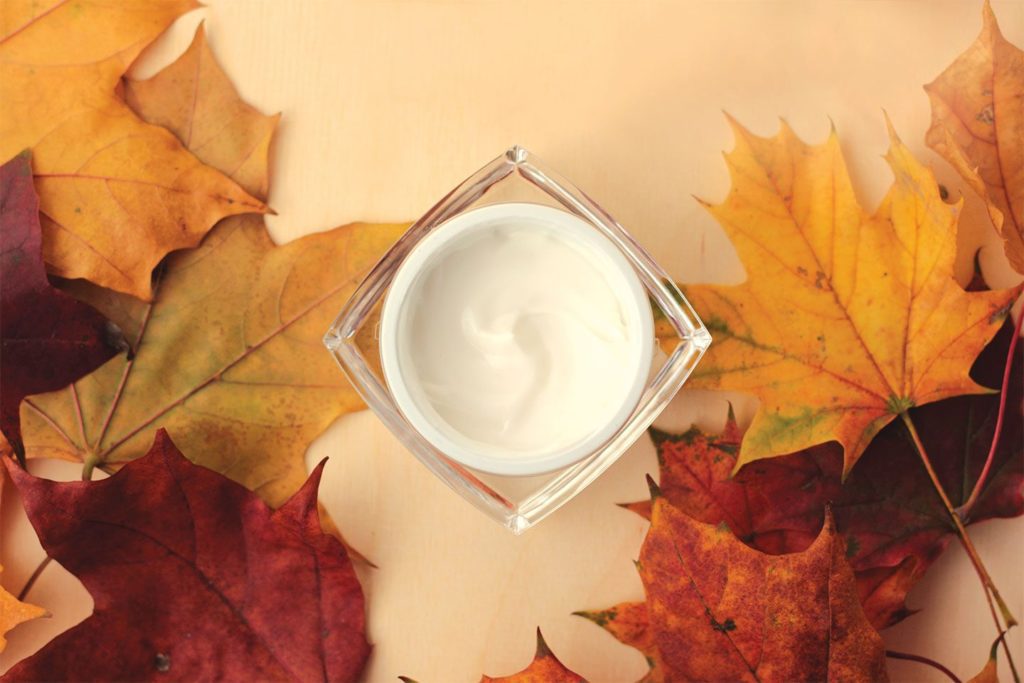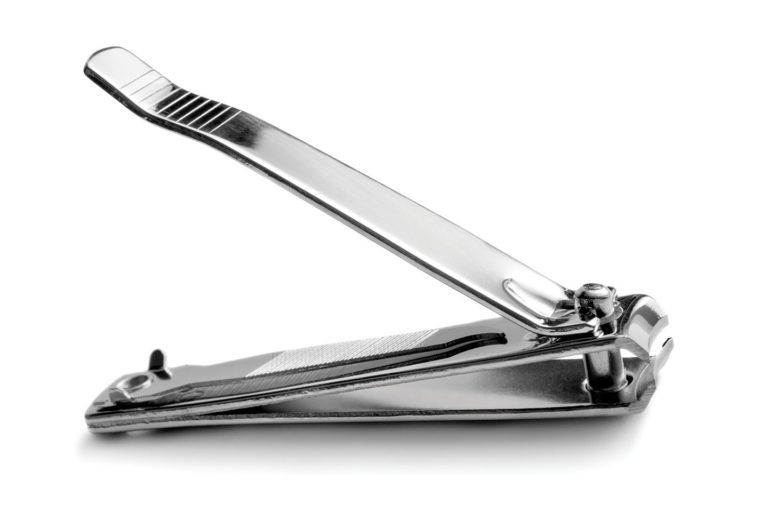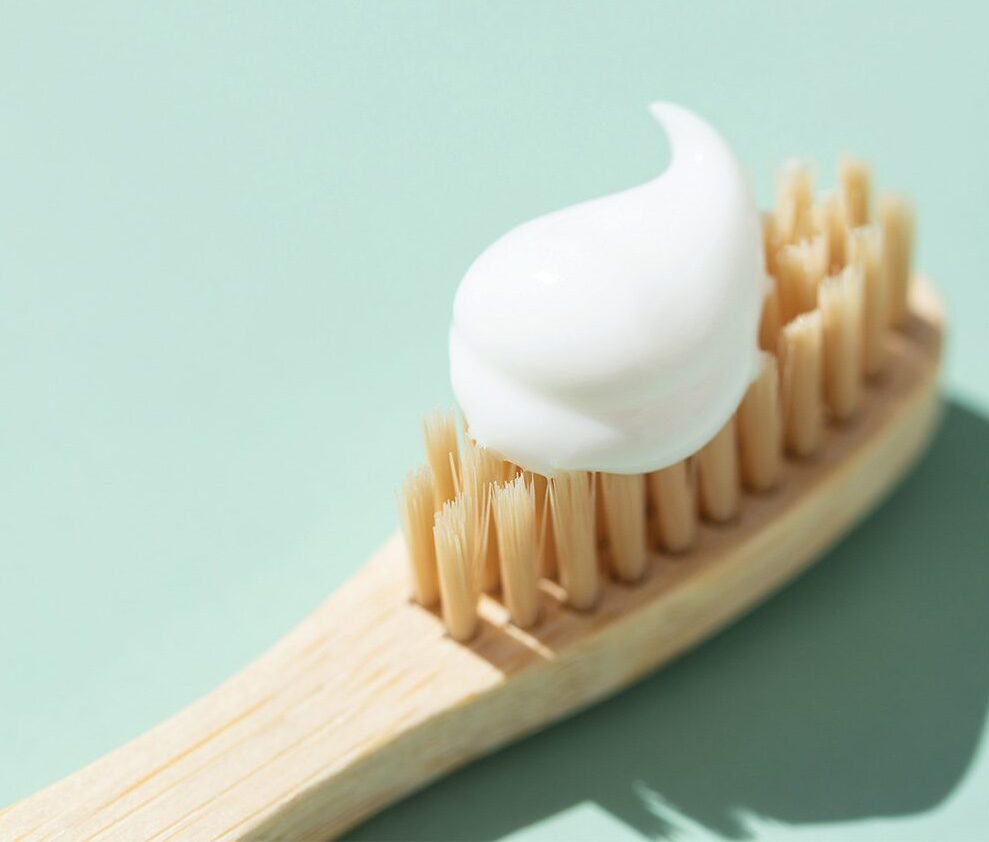For Her
Get Your Glow On
While the rest of the world seems to be all pumpkin spice and everything nice, your epidermis begs to differ. The chill of autumn is in the air, and it’s drying out your skin. Stave off flakey cheeks and stinging knuckles this season by arming yourself with hydrating skincare habits.
- Always moisturize after washing. Avoid using hot water while cleansing, and use a moisturizer that includes hyaluronic acid.
- Apply sunscreen. UV radiation never takes a day off, and neither should you. It’s vital to protect your skin’s moisture barrier with a daily dose of hydrating sun protection.
- Treat yourself to a hydrating mask. For the ultimate soothing sensation, pop your sheet mask into the refrigerator for a few minutes before using.
- Avoid harsh exfoliators. When your skin is dry, it may be tempting to buff the flakes away – don’t. Exfoliators are likely to irritate your already-sensitive skin.


- No humidity? Make your own. Turn on the humidifier, and let your skin absorb the hydrating goodness while you catch some z’s.
- Drink plenty of water. Dehydration can leave skin looking dull. Maintain your healthy glow from the inside by taking in a lot of fluids.
Beat The Blues: Ward off Seasonal Depression With Mood-Boosting Activities
The days are getting shorter, the nights are getting longer, and many are suffering from some degree of seasonal depression. Before the blues get the best of you, try incorporating a few mood-boosting activities into your day. You may find that going for a walk around the neighborhood or calling an old friend can atone for what you lack in vitamin D.
Perhaps this is the time to try that yoga class you’ve been considering. Express yourself through art. Serve your community. Pet a dog. Whip up a delicious snack full of protein and healthy fats – for example, a batch of nutty granola – to munch on throughout the week, and make extra to share with a friend.
These activities are sure to get the dopamine flowing for many, but it’s important not to oversimplify the reality of living with seasonal depression. If feelings of unhappiness persist, talk to your doctor about other treatment methods.
For the Home
Winter Is Coming for Your Grass: Prepare Your Lawn Now and Frost Won’t Stand a Chance
As cooler temperatures settle in, you may relish the break from constantly having to mow your grass – but you’re never completely off the hook when it comes to yard maintenance. Before the first frost of the season, take a few extra steps to help your grass weather the winter.
- Start with a thorough yard cleanup. Remove any debris that could yield dead spots in your grass, and routinely clear away fallen leaves.
- Test your soil. You should test your soil’s nutrient density every three to five years. This assessment will help you select a fertilizer that is best suited to your yard’s specific needs.
- Fertilize. Last but not least, fertilize. Fall presents the perfect time to fertilize cool-season grass varieties, such as Kentucky bluegrass and perennial ryegrass.



Smell Good, Feel Great: Common Household Scents That Inspire Good Feeling



If you’re trying to figure out how to create a calming presence in your home, the answer could be right under your nose. Scents have the power to evoke nostalgia and stir emotional responses. The smell of a certain ingredient can transport you miles and years away to your grandmother’s kitchen, or, for better or worse, to your elementary school cafeteria.
So, it makes “scents” that you may be selective about which aromas you want floating up and down the halls. Here are some common household fragrances that are known for rousing good feelings.
- Pine and lavender reduce stress.
- Citrus, rosemary, and peppermint energize the body and stimulate the mind.
- Fresh-cut grass, florals, and baby powder evoke happiness.
- Vanilla and sandalwood set the mood for romance.
For Him
Chew on This: Biting Your Nails Could Be Making You Sick
Let’s say that you just finished scratching your dog’s belly. Hopefully you washed your hands after, because now you’re handling raw chicken meat as you prepare tonight’s dinner. You washed your hands again, but did you remember to clean underneath your nails? Actually, have you ever cleaned under your nails?
Don’t panic – especially if stress makes you bite your nails. Apart from being a painful disruption to general nail aesthetics, nibbling on the ends of your fingers can be dangerous to your health. Thousands of germs hide underneath your nails, some of which can make you extremely sick like Salmonella and E. coli. Fortunately, there are a few things you can do.



- Practice good nail hygiene. Trim your nails short. Whenever you wash your hands, scrub the underside of your nails with soap or a nail brush. Sterilize your nail grooming tools before using them.
- Kick your nail biting habit to the curb. Coat your nails with a substance that tastes or smells bad. It will queue your senses and help you remember not to bite them. Recognize your triggers, and find other ways to cope.
All Lift, All the Time: If Gaining Muscle Is the Goal, Is Cardio Out?
Many fear that cardio will hinder muscle growth. Technically, it can – but only if you’re performing cardiovascular exercises so frequently and intensely that your calorie depletion is exceeding your nutrient intake.
So, if you’re consuming the necessary nutrients your body requires for building muscle, a little cardio can’t hurt. In fact, you’ll want to change up your workout routine every once in a while – go for a run, swim laps in a pool, or spend an afternoon rock climbing. When you focus in too closely on a specific muscle group or movement, you become more prone to injury through overuse. Periodically changing up your regimen will help to condition the entire body, thus improving your overall health and well-being.



When it comes to building muscle and mass, strength training and eating a protein-rich diet should certainly be the priority. But leaving cardio out altogether can do your body more harm than good. It’s important to find the right balance for your lifestyle and personal health needs.
For Parents



Night-before prepping can be a chore – we get it. But the burden of planning ahead is always lighter to bear than the burden of a rushed, chaotic morning. If you’re looking to simplify your A.M. routine and get your family out the door without the headache, we’ve got some tips for you.
Night Before To-Do's:
- Pack school bags, and set them by the door or in the car.
- Lay out clothes. Be sure to check the weather forecast and prepare accordingly.
- Pack lunches.
- Program the coffee maker to brew right before your morning alarm goes off.
- Prep breakfast. Overnight oats make for a healthy, convenient breakfast that can be customized with fruits, nuts, and other tasty toppings.
Morning To-Do's:
- Don’t hit snooze. Get out of bed at the chime of your first alarm.
- Distribute school lunches and convenient breakfasts to be eaten while getting ready or on the go.
- Set a timer to go off 5-10 minutes before you need to leave. Let this serve as an alert for everyone to start making their way toward the door.
- Anticipate potential traffic delays and give yourself a few extra minutes to reach your destination.
What to Do When Your Child Is the Bully?
Signs To Look For and How To Put a Stop to It
When you get the call that your child is being a bully, don’t take that news lightly. Too often, parents dismiss their children’s aggressive behavior as a phase. Unfortunately, without intervention and guidance, child bullies can grow up to be adult bullies. Unsure about your child’s in-school conduct? Ask yourself:
- Does your child take a positive view toward violence?
- Are they often aggressive to others?
- Do they need to control situations or win at all costs?
- Do they lack sympathy for others’ pain and hardship?



If you said “yes” to any of these questions, it may be time to have a conversation with your child about bullying. Explain the harmful consequences of their actions. Ask them how they think they can improve.
It’s also very important to get to the root of the behavior. Often, children will act out aggressively in response to feelings of loneliness, grief, or insecurity. Consider if they could be learning aggressive behaviors from someone at home.
Above all, keep the lines of communication open with your child. With proper counsel, you can make great strides toward raising a kinder, more empathetic child.
For the Whole Family
Fluoride: Not Today, Tooth Decay
You’ve seen it on labels for a variety of dental hygiene products, but do you really understand what fluoride is and what it does?
What is fluoride?
Fluoride is a naturally occurring mineral that prevents tooth decay in children and adults by keeping tooth enamel strong.
What are common sources of fluoride?
Drinking water (in fluoridated communities), food and beverages processed with fluoridated water, and many dental hygiene products.
How often should I be using fluoridated products?



All fluoridated dental products are regulated by the FDA and will be clearly labeled. Use those products as directed for safe and effective dental care.
Is fluoride safe for kids?
The CDC recommends that children should start using fluoridated toothpaste at the age of 2. Children under the age of 6 should not use fluoride mouth rinse unless directed to do so by a medical professional.
Take a Deep Dive Into Genealogy: Understand the Past to Build a Better Future
Knowing where you come from can add years to your life. Imagine tracing your family history and learning that you’re genetically predisposed to a disease. While such news can be painful to learn, you can now take steps to prevent illness and prolong the lives of yourself and your family members.
Knowledge of your family history can also reinforce your sense of identity and nurture qualities you didn’t know you had. Imagine the strength one may find in learning that the blood of a brilliant inventor or an acclaimed artist runs through their veins.
All of that to say, it’s important to understand your genealogy. The best part? Tracking family history can be a fun activity for the whole family.



- Trace your family tree using information from elderly relatives and online databases.
- Keep the legacy alive by celebrating cultural holidays and preparing traditional recipes.
- Seek out a group in your community that may share in your family’s cultural heritage.
- If feasible, go visit the place where your ancestors are from.

